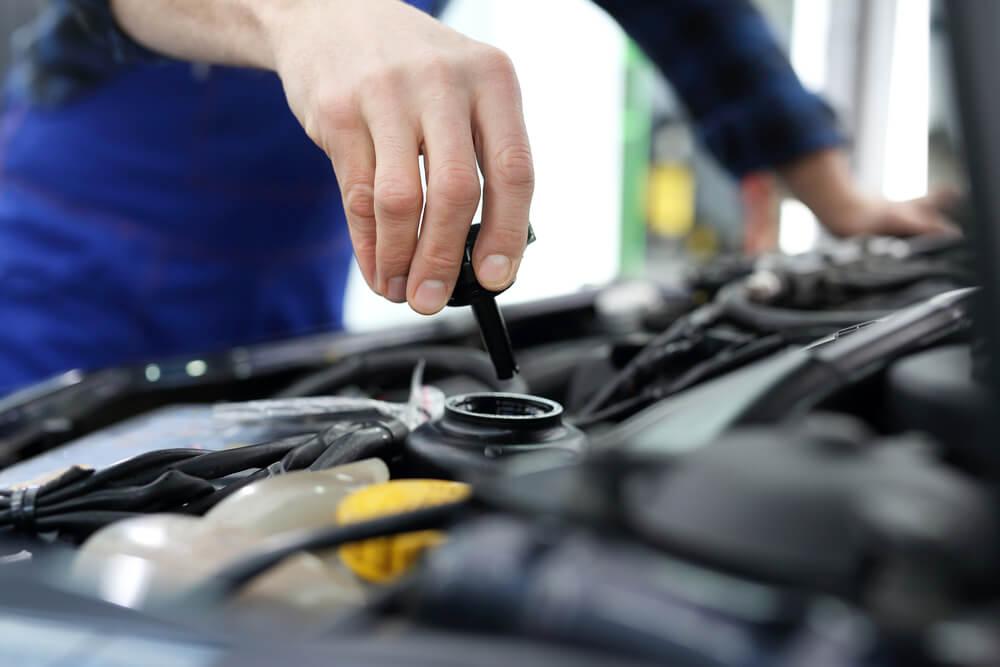Power steering is vital component in modern vehicles, making it easier to steer and control the car. The fluid in the power steering system is responsible for transmitting hydraulic power from the pump to the steering gear, ensuring a smooth and responsive steering experience.
It’s important to understand the operating temperature range of the power steering fluid as it affects the overall performance and longevity of the system. But how hot does power steering fluid get?
In this article, we will explore how hot power steering fluid gets, the ideal temperature ranges, and how to tell if the fluid is overheating.

How hot does power steering fluid get?
Power steering fluid can get hot when it is circulating through the power steering system while the engine is running. The temperature can vary depending on factors such as driving conditions, load on the system, and the type of fluid used. Power steering fluid temperatures generally range from around 180°F to 250°F.
It’s important to note that operating temperatures above 250°F can cause the fluid to break down, leading to reduced performance and possible power steering system damage.
What happens if power steering fluid overheats?
Power steering fluid is designed to withstand high temperatures, usually 150 to 250 degrees Fahrenheit. However, if the fluid overheats, it can cause serious problems for the power steering system.
When power steering fluid overheats, it can break down and lose its viscosity, leading to poor steering performance and increased wear and tear on the components. The high temperatures can also cause air bubbles in the power steering fluid, reducing its effectiveness and increasing the risk of leaks. In extreme cases, overheated power steering fluid can cause the seals in the system to fail, leading to leaks and reduced performance.
In addition to these problems, overheated power steering fluid can cause other parts of the vehicle to fail. For example, if the fluid leaks onto hot parts of the engine, it can cause fires, while high temperatures can cause the hoses in the power steering system to fail.
To prevent power steering fluid from overheating, it’s important to maintain the system and check the fluid level regularly. If you notice that the fluid is low, adding more fluid is important to prevent damage. If the fluid is discolored, thick, or has an unusual odor, it’s a sign that you have burnt power steering fluid that needs to be replaced.
Overheated power steering fluid can cause serious problems for your vehicle, including poor steering performance, increased wear and tear on components, and even fires. To prevent these issues, it’s important to maintain the power steering system and check the fluid level regularly. If you notice any signs of overheating, have the system inspected by a professional to prevent catastrophe.
What causes power steering fluid to boil?
Power steering fluid operates under high temperatures and pressure, which can cause it to boil if not properly maintained. Some common causes of boiling power steering fluid include:
Low fluid levels
The fluid level in the power steering system should be checked regularly. The primary cause of low fluid level is leaks. The steering fluid can leak from various places. It could leak from damaged seals or worn hoses. Power steering fluid boiling can result from low fluid level.
Air pockets
Another primary cause is trapped air in the system. The power steering system can trap air in the system when you run low on steering fluid or when you replace any power steering component. Air pockets in the system can cause foam in the power steering reservoir due to pressure fluctuations.
Contaminated fluid
The power steering is a sealed system. Therefore, the steering fluid should not leak or let dust, dirt, or debris enter it. Dirt, rust, and other contaminants can cause power steering fluid bubbling or boiling.
Worn components
Another notable sign is worn-out pump bearings, seals, and hoses. Worn-out pump bearings, hoses, and seals can cause a loss of pressure and an increase in heat, leading to the boiling of the fluid.
Incorrect fluid type
Power steering systems are critical components. Using the wrong type of fluid in the system can cause power steering overheating problems. Always stick with the manufacturer’s recommendation.
If the power steering fluid boils, it can damage the system and cause a loss of power steering. In some cases, boiling can also lead to a complete failure of the system.
To prevent boiling, it is important to check the fluid level and condition regularly, and to address any leaks or worn components as soon as possible. And it is important to use the correct type of fluid recommended by the vehicle manufacturer.
Does power steering fluid rise when hot?
Power steering fluid can reach high temperatures when used, usually in the range of 176 – 194°F (80 – 90°C). High temperatures can cause the fluid to break down and degrade, reducing its ability to lubricate and protect the power steering system components.
Yes, power steering fluid can rise in temperature when hot, as a result of high stress levels on the system, leading to an increase in fluid viscosity, which can cause decreased system efficiency and potential component failure if left unchecked. But, the fluid does not evaporate.
To prevent these issues, it’s recommended to check the power steering fluid level and quality regularly, and to replace the fluid at regular intervals as per manufacturer recommendations.
Does power steering fluid need to be cooled?
Yes, the power steering fluid needs to be cooled in some vehicles. The power steering fluid temperature typically operates around 60 to 80 degrees Celsius. The fluid in the system is designed to function effectively within this temperature range. For some reason, car manufacturers equip some cars with power steering fluid coolers to prevent the fluid from rising above the recommended temperature.
However, in extremely hot climates or where a vehicle is driven continuously at high speeds for long periods, the temperature of the power steering fluid may rise slightly. In such cases, the vehicle’s cooling system is designed to dissipate any excess heat generated in the power steering system for vehicles without the steering fluid cooler.
Final word
At this point, you’ll no longer ask, how hot can power steering fluid get? Power steering systems in cars can get extremely hot, especially when running with low fluid levels. The heat is generated by the friction between the components of the power steering system.
The high temperature can cause damage to the system and its components, reducing its lifespan and leading to costly repairs. We suggest to check the power steering fluid levels and condition regularly for seamless engine operation. Fix underlying issues or contact a mechanic if you don’t trust your gut.
Proper maintenance can help keep the power steering system working smoothly and prevent costly repairs.

 Chanel earrings, CC dangle earrings in water drop shape adorned with stones and pearls v39
Chanel earrings, CC dangle earrings in water drop shape adorned with stones and pearls v39 